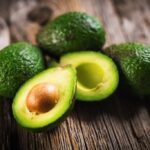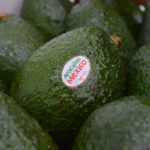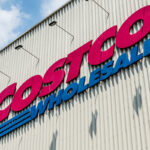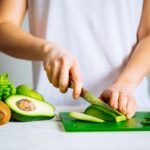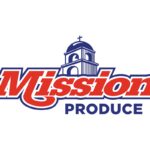Peruvian frozen avocado: A developing market

Despite a dip in production following adverse weather brought by El Niño in 2023, Peru is poised to retain its position as the second-largest avocado exporter globally. However, industry sources agree that the avocado business must adapt within the next five years to maintain the healthy growth that brought it to the top of the global market.
How does the Peruvian frozen avocado business fit into this future strategy? Can frozen avocado exports help the traditional category retain its success and keep growing?
Peruvian Hass Avocado Producers and Exporters Association (ProHass) President Arturo Medina believes that demand continues to favor fresh fruit.
“The fruit that does not meet quality parameters is available for the domestic market (whose demand is still incipient but growing), and is also used for processing. It is converted into guacamole or frozen slices. Currently, about 9% of the total production of Peruvian avocados is used for freezing, almost all of the Hass variety,” Medina told FreshFruitPortal.com.
Medina added that frozen avocado exports are mostly destined for food services and hotels, making it a very specific niche. For this reason, the product requires careful cold-chain management, making it a much smaller market compared to fresh offerings.
“Frozen avocados have a small market with high added value and specialization; however, fresh avocados continue to be the most relevant consumption. The most sought-after requirements by the target markets are the slides for sandwiches,” he added.
Related articles: The growing market for Peruvian frozen fruits
The main market for fresh Peruvian avocados is Europe, but is there a possibility of reaching more markets with frozen avocados? Does it all depend on the good implementation and use of technologies?
Medina explained that frozen avocado has a very different market than Hass avocado.
“And this has to do with volumes, handling, and processing. For example, a very sensitive aspect is that avocado destined for freezing has a greater amount of oil and, as the pulp is exposed, it is prone to be affected by microbiological problems such as listeria, so the plants that do freezing must have excellent biosafety and sanitary conditions,” he emphasized.
Regarding the quality of frozen fruit, Medina mentions, as a “critical aspect,” pulp browning, “which in some way is a reflection of the production system in the field, related to nutrition, climate, and harvesting times.
To minimize the impact of this quality parameter, exporting companies and their customers have rigorous technological processes for managing browning, also related to the destination market and the days of consumption, Medina said.
“Current trends demand a flavor that is as natural as possible, without browning, and in ready-to-eat presentations. Another critical aspect is, as in fresh fruit, the presence of heavy metals (such as cadmium) and pesticide residues, at levels that exceed those permitted by the destination markets, which are becoming more and more rigorous on this issue,” he added.
Challenges
But what are the challenges for Peruvian avocados in 2024?
Medina answers: “We have to maintain and improve the competitiveness of Peruvian avocado in the world; this crop is increasingly planted in all continents and we are all aiming at the same markets. The long quarantines due to COVID-19 and the climatic problems we have experienced in recent years have highlighted the need to learn more about the crop in stressful situations.
The main challenges facing this industry are paying attention to the root, absorption, water quality, and damage that can be caused by excess humidity and radiation. Likewise, we must go deeper into pest management; we must know which ones have a direct effect not only on the damage they can cause to the fruit but also on the use of pesticides”.
It is crucial, Medina stressed, to continue working on traceability and control systems, even more so now that destination countries demand products that come from well-managed fields and without the presence of heavy metals and pesticide residues.
“Finally, a goal in the short term is to begin to disseminate and apply activities that seek to homogenize the quality of avocado for export. And this has to do, mainly, with field certifications, good practices, and the dry matter of the exported fruit,” he concludes.
The Global Avocado Summit organized by the Chilean Avocado Committee and Yentzen Group will be held on November 21 at the Casino Monticello event center in Chile.
















